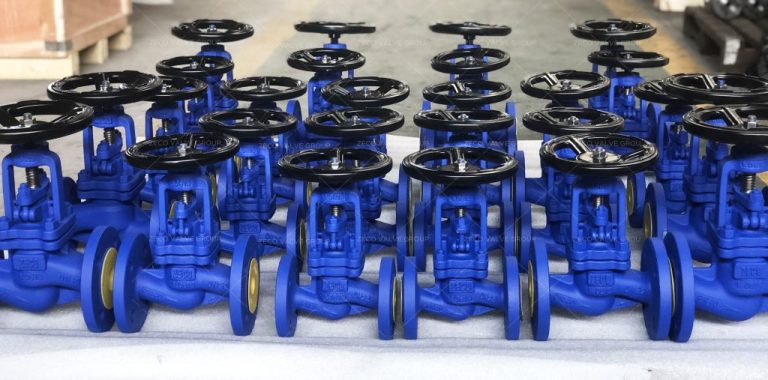The Difference Between Floating Ball Valve, Fixed Ball Valve and Elastic Ball Valve american standard flush valve
gate valve lock
gate valve lockouts
what is a cooling tower flow control valve
1 gate valve
The ball valve is a valve that uses a ball with a circular channel as the opening and closing part, and the ball rotates with the valve stem to realize the opening and closing action. The opening and closing part of the ball valve is a sphere with holes, which rotates around the axis perpendicular to the channel, so as to achieve the purpose of opening and closing the channel. Ball valves are mainly used to open and close pipelines and equipment media. It has compact structure, reliable sealing, simple structure, relatively small volume, light weight, convenient maintenance, no vibration and low noise. The sealing surface and spherical surface are often closed, not easily eroded by the medium, easy to operate and maintain, suitable for general working media such as water, solvent, acid and natural gas, and also suitable for media with harsh working conditions.
The ball valve can be divided into straight-through type, three-way type and right-angle type according to its channel position. The latter two ball valves are used to distribute the medium and change the flow direction of the medium. According to the structure, the ball valve can be divided into: floating ball valve, fixed ball valve, elastic ball valve and oil-sealed ball valve; according to the channel can be divided into straight-through type, angle type and three-way type, etc. . According to the connection method, it can be divided into three types: threaded connection, flange connection and welding type. The difference between floating ball valve, fixed ball valve and elastic ball valve is as follows.
1. Floating ball valves
The ball of the floating ball valve is floating without a fixed shaft. Under the action of the medium pressure, the ball can produce a certain displacement and be tightly pressed on the sealing ring of the outlet end to ensure the sealing of the outlet end, which is a single-sided forced seal. When designing, it is important to consider whether the sealing ring material can withstand the medium load of the sphere, because the load of the sphere bearing the working medium is all transferred to the outlet sealing ring. Therefore, this floating ball structure is widely used in medium and low pressure ball valves. In addition, the design should also consider the large torque required for the operation of large-diameter ball valves.
2. Fixed ball valves
The ball of the fixed ball valve is fixed, with a fixed shaft, and does not move after being pressed. Therefore, the two sealing rings should have sufficient pre-tightening force in the design to ensure the sealing, which is a double-sided forced sealing. Usually, thrust or sliding bearings are installed on the upper and lower valve stems that are connected with the ball. Compared with floating ball valves, the force generated by the fluid pressure in the pipeline before the valve on the sphere is all transmitted to the upper and lower bearings. It will move, and the valve seal is realized by the spring and the medium pressure pushing the valve seat, so the valve seat will not bear excessive pressure, so the fixed ball valve seat has small deformation, light operating torque, and reliable sealing performance. It is suitable for long-distance pipelines and general Industrial pipelines have been designed with special consideration for their safety and resistance to harsh environments, and are suitable for various corrosive and non-corrosive media. It has a long life and is especially suitable for high pressure and large diameter occasions.
In order to reduce the operating torque of the ball valve and increase the reliability of the seal, oil-sealed ball valves have appeared in recent years, that is, special lubricating oil is injected between the sealing surfaces to form an oil film, which enhances the sealing performance and reduces the operating torque, more suitable for high-pressure and large-diameter ball valves.
3. Elastic ball valves
The ball of the ball valve is elastic. Both the ball and the valve seat sealing ring are made of metal materials, and the sealing specific pressure is very large. The pressure of the medium itself cannot meet the sealing requirements, and external force must be applied. This valve is suitable for high temperature and high pressure medium. The elastic sphere is obtained by opening an elastic groove at the lower end of the inner wall of the sphere to obtain elasticity. When closing the channel, use the wedge head of the valve stem to expand the ball and compress the valve seat to achieve sealing. Loosen the wedge head before turning the ball, and the ball will return to its original shape, so that there is a small gap between the ball and the valve seat, which can reduce the friction and operating torque of the sealing surface.
Related News & Blog
Navigating Flow: The Art of Manual Regulating Valves in Water Management
Water is an invaluable resource that plays a crucial role in various aspects of our lives. From industrial processes to agricultural irrigation, efficient water management is essential for sustainable…
Joint training base for graduate student was officially launched
“Joint training base for graduate students” was officially launched in Weidouli Special ValvesIn order to consolidate the new mode of “student + mentor + project” cooperation betwe…
Exploring the Advantages of Monel Valves in Chemical Processing
The chemical processing industry operates in an environment where the handling of aggressive and corrosive substances is a daily norm. In such an environment, the choice of materials and components is…
